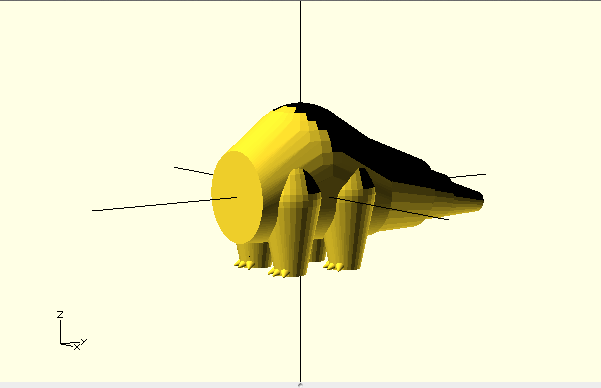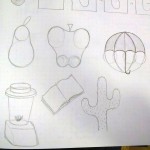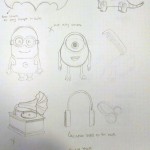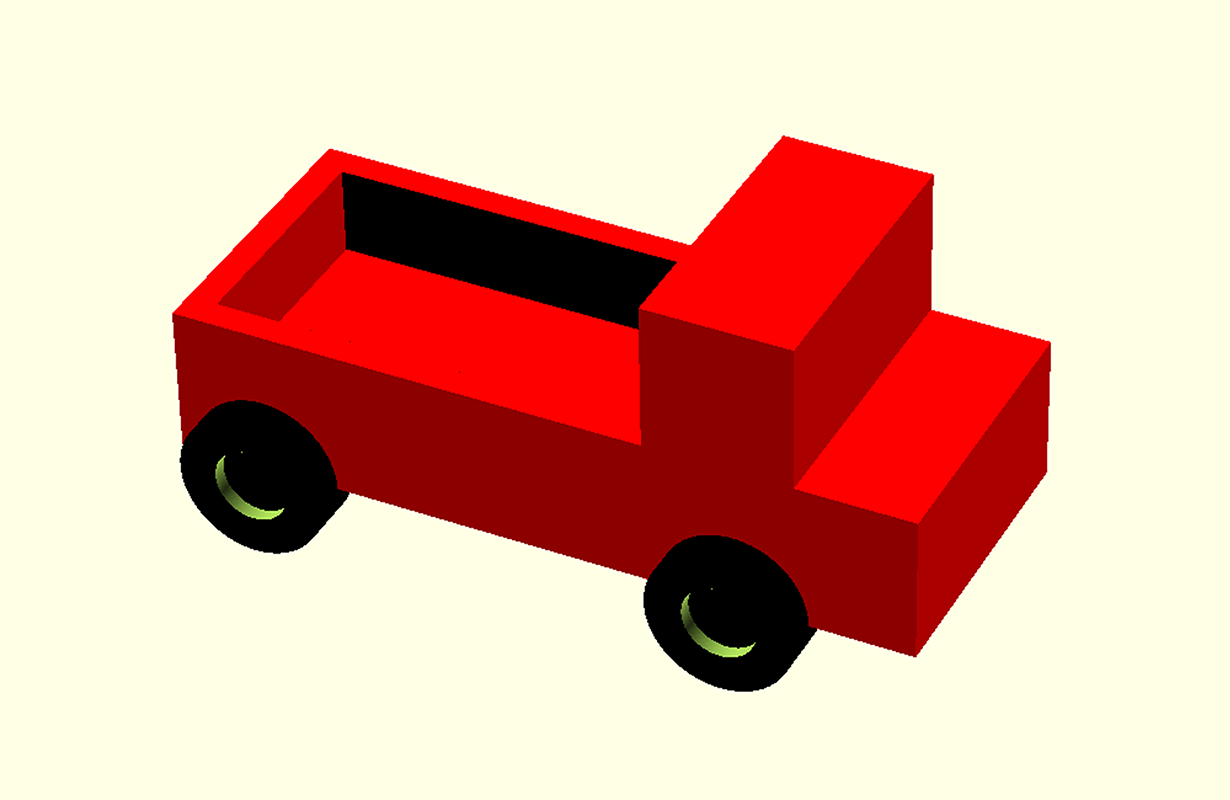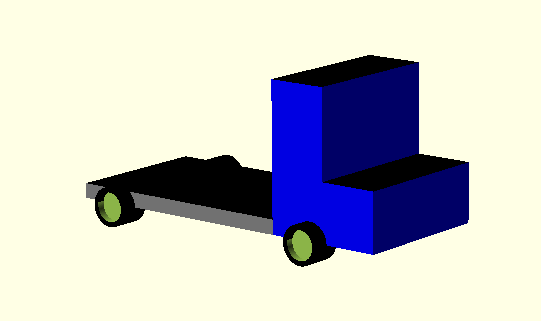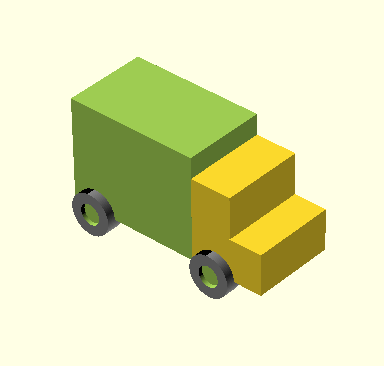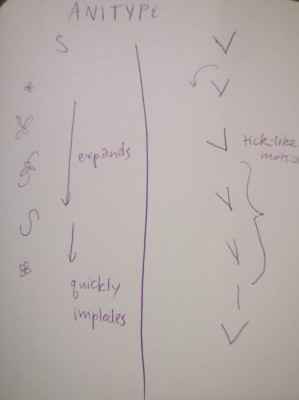1
2
3
4
5
6
7
8
9
10
11
12
13
14
15
16
17
18
19
20
21
22
23
24
25
26
27
28
29
30
31
32
33
34
35
36
37
38
39
40
41
42
43
44
45
46
47
48
49
50
51
52
53
54
55
56
57
58
59
60
61
62
63
64
65
66
67
68
69
70
71
72
73
74
75
76
77
78
79
80
81
82
83
84
85
86
87
88
89
90
91
92
93
94
95
96
97
98
99
100
101
102
103
104
105
106
107
108
109
110
111
112
113
114
115
116
117
118
119
120
121
122
123
124
125
126
127
128
129
130
131
132
133
| //Referenced Espen Skjervold's work 2013
//constants
maxX=20; //< -- less important, size of the biggest object
sizeFactor=2.3; //<-- The size factor between an object and its child objects. The smaller the factor, the larger the children will be.
fractal(4); // <--- render the fractal with n number of levels
//Recursive method
module fractal(levels, i=1, xPos=0, yPos=0, zPos=0) {
currentFactor=pow(sizeFactor,i);
x=maxX/currentFactor;
if (i<=levels) {
//top
fractal(levels, i+1, xPos , yPos , zPos);
fractal(levels, i+1, xPos , yPos , zPos);
fractal(levels, i+1, xPos*2 , yPos*2 , zPos*0.5);
fractal(levels, i+1, xPos*0.7 , yPos*0.5 , zPos*0.4 );
fractal(levels, i+1, xPos +x/2, yPos + x/2, zPos + x/2);
fractal(levels, i+1, xPos -x/2, yPos + x/2, zPos + x/2);
fractal(levels, i+1, xPos +x/2, yPos - x/2, zPos + x/2);
fractal(levels, i+1, xPos -x/2, yPos - x/2, zPos + x/2);
//bottom
fractal(levels, i+1, xPos , -yPos , -zPos );
fractal(levels, i+1, xPos , yPos , -zPos );
fractal(levels, i+1, xPos*3 , yPos*3 , -zPos*3 );
fractal(levels, i+1, xPos*0.2 , yPos*0.4 , -zPos*0.5 );
fractal(levels, i+1, xPos*1.3 , yPos*1.5 , -zPos*2 );
fractal(levels, i+1, xPos*0.7 , yPos*0.5 , -zPos*0.4 );
fractal(levels, i+1, xPos +x/2, yPos + x/2, -zPos - x/2);
fractal(levels, i+1, xPos -x/2, yPos + x/2, -zPos - x/2);
fractal(levels, i+1, xPos +x/2, yPos - x/2, -zPos - x/2);
fractal(levels, i+1, xPos -x/2, yPos - x/2, -zPos - x/2);
makeCube(x, xPos, yPos, zPos, i);
}
}
//The actual rendering of each object
module makeCube(x, xPos, yPos, zPos, level) {
union() {
translate([xPos+x/2, yPos, zPos])
color(["Coral"])
cube((x)/1.4, center=true, $fn=10 );
translate([xPos-x/2, yPos, zPos])
color(["Coral"])
cube((x)/1.4, center=true, $fn=10 );
translate([xPos, yPos+x/2, zPos])
color(["Coral"])
cube((x)/1.4, center=true, $fn=10 );
translate([xPos, yPos-x/2, zPos])
color(["Coral"])
cube((x)/1.4, center=true, $fn=10 );
translate([xPos, yPos, zPos+x/2])
color(["Coral"])
cube((x)/1.4, center=true, $fn=10 );
translate([xPos, yPos, zPos-x/2])
color(["Coral"])
cube((x)/1.4, center=true, $fn=10 );
translate([xPos, yPos*0.5, -zPos])
color(["Coral"])
cube((x)/1.4, center=true, $fn=10 );
translate([xPos, yPos*0.5, zPos])
color(["Coral"])
cube((x)/1.4, center=true, $fn=10 );
translate([xPos, yPos, -zPos*0.5])
color(["Coral"])
cube((x)/1.4, center=true, $fn=10 );
translate([xPos, yPos, zPos*0.5])
color(["Coral"])
cube((x)/1.4, center=true, $fn=10 );
translate([xPos*0.5, yPos, -zPos])
color(["Coral"])
cube((x)/1.4, center=true, $fn=10 );
translate([xPos*0.5, yPos, zPos])
color(["Coral"])
cube((x)/1.4, center=true, $fn=10 );
translate([xPos*0.5, yPos*0.5, -zPos])
color(["Coral"])
cube((x)/1.4, center=true, $fn=10 );
translate([xPos*0.5, yPos*0.5, zPos])
color(["Coral"])
cube((x)/1.4, center=true, $fn=10 );
translate([xPos*2, yPos*2, -zPos])
color(["Coral"])
cube((x)/1.4, center=true, $fn=10 );
translate([xPos*2, yPos*2, zPos])
color(["Coral"])
cube((x)/1.4, center=true, $fn=10 );
translate([xPos, yPos*2, -zPos*2])
color(["Coral"])
cube((x)/1.4, center=true, $fn=10 );
translate([xPos, yPos*2, zPos*2])
color(["Coral"])
cube((x)/1.4, center=true, $fn=10 );
}
} |



